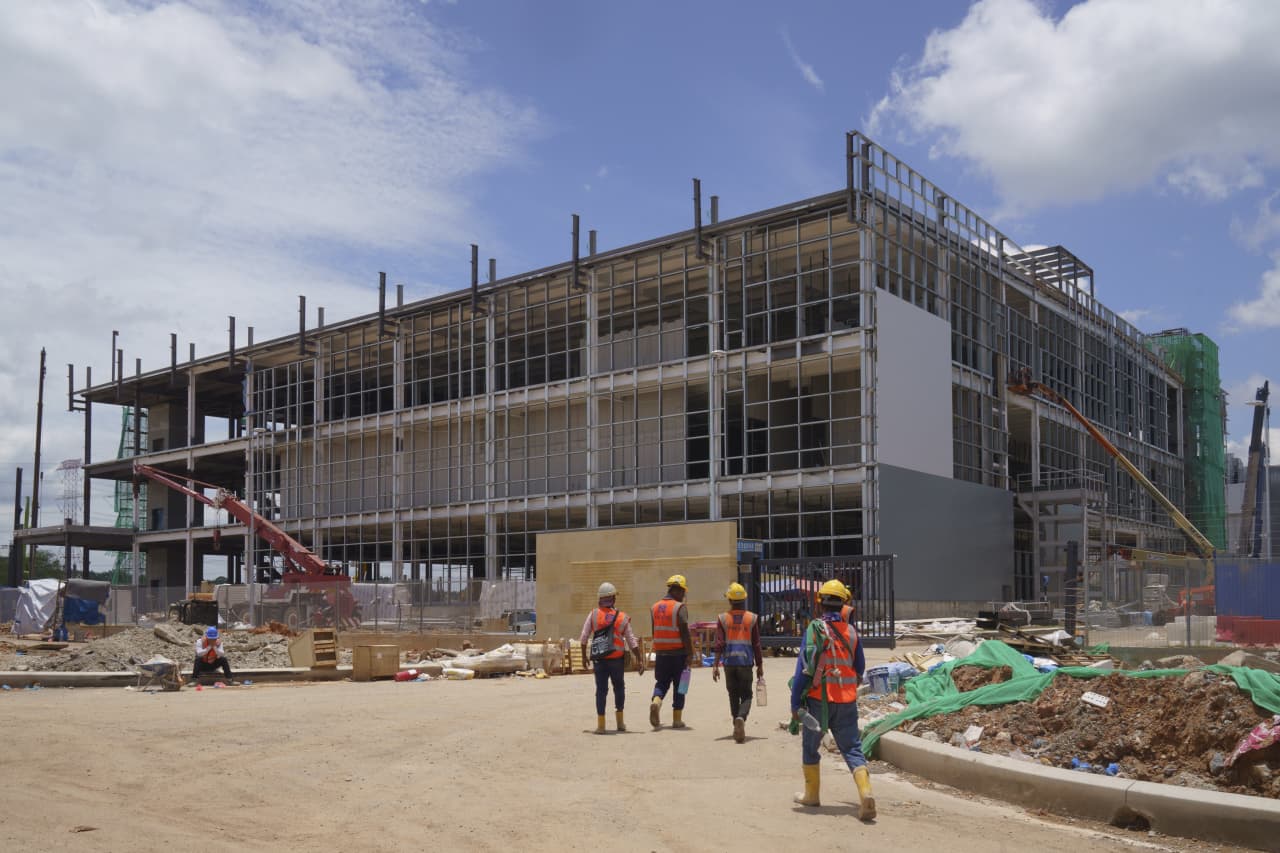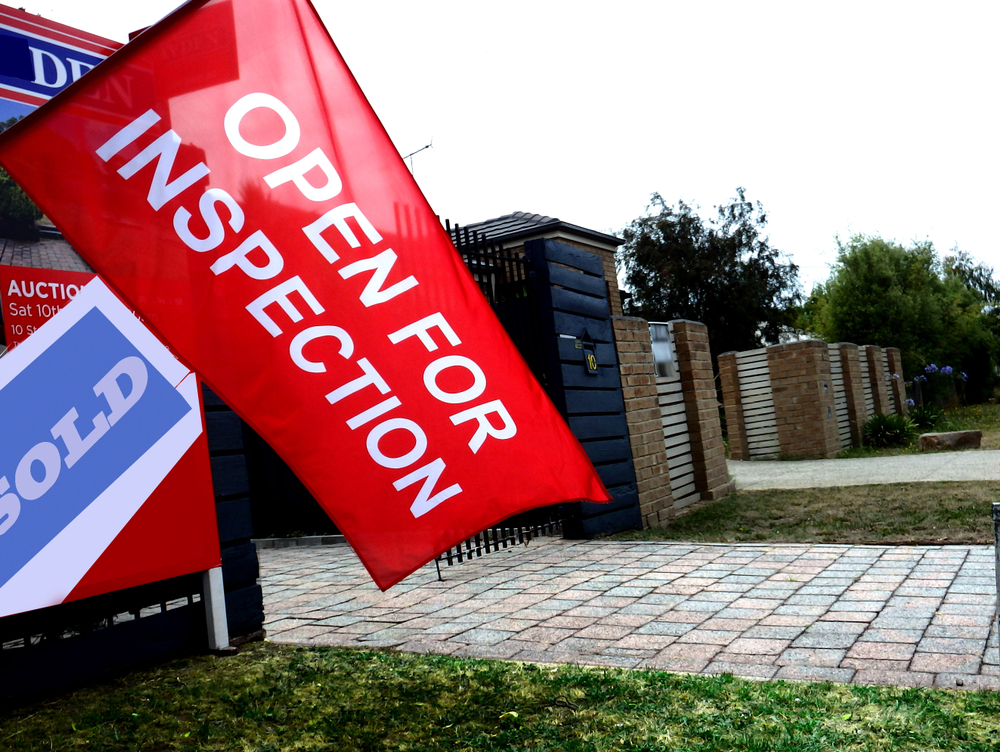One of the Biggest AI Boomtowns Is Rising in a Tech-Industry Backwater
Blackstone and TikTok’s parent are among those investing in data centers in Malaysia’s Johor, known for palm-oil plantations
ISKANDAR PUTERI, Malaysia— Gary Goh was the chief executive of a publicly listed property developer three years ago when prospective clients started asking whether his company had land for data centres.
Goh was vaguely aware that technology companies needed computer centres to manage heaps of data, but he had never seen such a building. “I didn’t know whether it was round, was it a rectangle, was it a triangle?” he said.
But after the 10th inquiry, Goh realised the tech industry was about to spend billions of dollars on data centres in his sleepy corner of Malaysia. So he quit his job to cash in.
Nowhere else on Earth has been physically reshaped by artificial intelligence as quickly as the Malaysian state of Johor. Three years ago, this region next to Singapore was a tech-industry backwater. Palm-oil plantations dotted the wetlands. Now rising next to those tropical trees 100 miles from the equator are cavernous rectangular buildings that, all together, make up one of the world’s biggest AI construction projects.
TikTok’s Chinese parent company, ByteDance , is spending $350 million on data centres in Johor. Microsoft just bought a 123-acre plot not far away for $95 million. Asset manager Blackstone recently paid $16 billion to buy AirTrunk , a data-centre operator with Asia-wide locations including a Johor facility spanning an area the size of 19 football fields. Oracle last week announced a $6.5 billion investment in Malaysia’s data-centre sector, though it didn’t specify where.
In all, investments in data centres in Johor, which can be used for both AI and more conventional cloud computing, will reach $3.8 billion this year, estimates regional bank Maybank.
“At first glance, Johor seems unlikely, but once you double click on it, it makes a lot of sense,” said Peng Wei Tan, a Blackstone senior managing director who helped lead its acquisition of AirTrunk.
To understand how one of the first boomtowns of the AI era sprouted at the southern tip of the Malay Peninsula, consider the infrastructure behind AI.
Tech giants want to train chatbots, driverless cars and other AI technology as quickly as possible. They do so in data centres with thousands of computer chips, which require a lot of power, as well as water for cooling.
Northern Virginia became the world’s biggest data-centre market because of available power, water and land. But supply is running low. Tech companies can’t build data centres fast enough in the U.S. alone.
Enter Johor. It has plentiful land and power—largely from coal—and enough water. Malaysia enjoys generally friendly relations with the U.S. and China, reducing political risk for companies from the rival nations.
The other important factor: location. Across the border is Singapore, which has one of the world’s densest intersections of undersea internet cables. Those are modern-age highways, enabling tech companies to sling mountains of data around the world.
“This Johor development isn’t for serving just Malaysia,” said Rangu Salgame , chief executive of Princeton Digital Group, a data-centre operator that counts some of the world’s biggest tech companies as clients. “This is AI being deployed globally.”
Working with government
Salgame said companies previously built data centres in Singapore because of its interconnectivity. But in 2019, the tiny and densely populated island nation put a moratorium on new centres because of energy constraints. So data-centre operators did the next best thing, which was to go an hour across the bridge.
While Amazon , Google, Meta and other tech giants run their own data centres, they also rely on third-party data-centre operators for 30% of their needs in the U.S. and about 90% of their needs internationally, Salgame said.
The third parties construct data centres, which cost $1 billion to $2 billion each. Tech companies act as tenants, installing their own hardware inside. Most Johor data centres are run by third parties, which don’t necessarily have agreements with tech clients before starting projects.
“We’re going in speculatively,” Salgame said.
Salgame said he gets insights from big tech companies before beginning projects, so he has a sense of what they want. And the sense now is they want Johor.
Salgame predicts that the Malaysian state will become the world’s second-biggest data-center market within five years. “I’ve never seen anywhere in the world come up at this speed,” he said.
The industry measures data-centre markets by the electricity they use. Northern Virginia has about 4.2 gigawatts active and an additional 11.4 gigawatts under construction, committed or in early stages, said Vivian Wong , an analyst at research firm DC Byte.
Johor, after having less than 10 megawatts—or 0.01 gigawatts—three years ago, now has 0.34 gigawatt active and an additional 2.6 gigawatts under construction, committed or in early stages.
Help from government
Government officials have mostly encouraged the investments, streamlining the permitting process. Salgame said his company’s Johor center was proposed, constructed and operating within 15 months.
But the mayor of Johor Bahru, the state capital, said the government must balance economic benefits with local needs. He said it should consider building desalination plants, among other things, to ensure locals have enough water. The area has faced shortages.
“We know that people are too hyped about data centres,” said the mayor, Mohd Noorazam Osman, at a recent conference.
After quitting his property-development job, the 40-year-old Goh started consulting for potential land buyers and sellers. His specialty was knowing which sites among the plantations and swamps could be easily converted into data centres.
He found success in the Johor city of Iskandar Puteri, where telecom carriers recently broke ground on a 42-acre lot across the street from a McDonald’s. The site isn’t perfect. A hill needs to be flattened before further construction occurs.
But on a recent sweltering day, Goh pointed at the power lines and light-blue water pipes running through the lot, signifying easy access to electricity and water. “These conditions are hard to come by,” he said.
 Copyright 2020, Dow Jones & Company, Inc. All Rights Reserved Worldwide. LEARN MORE
Copyright 2020, Dow Jones & Company, Inc. All Rights Reserved Worldwide. LEARN MORE
A divide has opened in the tech job market between those with artificial-intelligence skills and everyone else.
A 30-metre masterpiece unveiled in Monaco brings Lamborghini’s supercar drama to the high seas, powered by 7,600 horsepower and unmistakable Italian design.
A divide has opened in the tech job market between those with artificial-intelligence skills and everyone else.
There has rarely, if ever, been so much tech talent available in the job market. Yet many tech companies say good help is hard to find.
What gives?
U.S. colleges more than doubled the number of computer-science degrees awarded from 2013 to 2022, according to federal data. Then came round after round of layoffs at Google, Meta, Amazon, and others.
The Bureau of Labor Statistics predicts businesses will employ 6% fewer computer programmers in 2034 than they did last year.
All of this should, in theory, mean there is an ample supply of eager, capable engineers ready for hire.
But in their feverish pursuit of artificial-intelligence supremacy, employers say there aren’t enough people with the most in-demand skills. The few perceived as AI savants can command multimillion-dollar pay packages. On a second tier of AI savvy, workers can rake in close to $1 million a year .
Landing a job is tough for most everyone else.
Frustrated job seekers contend businesses could expand the AI talent pipeline with a little imagination. The argument is companies should accept that relatively few people have AI-specific experience because the technology is so new. They ought to focus on identifying candidates with transferable skills and let those people learn on the job.
Often, though, companies seem to hold out for dream candidates with deep backgrounds in machine learning. Many AI-related roles go unfilled for weeks or months—or get taken off job boards only to be reposted soon after.
Playing a different game
It is difficult to define what makes an AI all-star, but I’m sorry to report that it’s probably not whatever you’re doing.
Maybe you’re learning how to work more efficiently with the aid of ChatGPT and its robotic brethren. Perhaps you’re taking one of those innumerable AI certificate courses.
You might as well be playing pickup basketball at your local YMCA in hopes of being signed by the Los Angeles Lakers. The AI minds that companies truly covet are almost as rare as professional athletes.
“We’re talking about hundreds of people in the world, at the most,” says Cristóbal Valenzuela, chief executive of Runway, which makes AI image and video tools.
He describes it like this: Picture an AI model as a machine with 1,000 dials. The goal is to train the machine to detect patterns and predict outcomes. To do this, you have to feed it reams of data and know which dials to adjust—and by how much.
The universe of people with the right touch is confined to those with uncanny intuition, genius-level smarts or the foresight (possibly luck) to go into AI many years ago, before it was all the rage.
As a venture-backed startup with about 120 employees, Runway doesn’t necessarily vie with Silicon Valley giants for the AI job market’s version of LeBron James. But when I spoke with Valenzuela recently, his company was advertising base salaries of up to $440,000 for an engineering manager and $490,000 for a director of machine learning.
A job listing like one of these might attract 2,000 applicants in a week, Valenzuela says, and there is a decent chance he won’t pick any of them. A lot of people who claim to be AI literate merely produce “workslop”—generic, low-quality material. He spends a lot of time reading academic journals and browsing GitHub portfolios, and recruiting people whose work impresses him.
In addition to an uncommon skill set, companies trying to win in the hypercompetitive AI arena are scouting for commitment bordering on fanaticism .
Daniel Park is seeking three new members for his nine-person startup. He says he will wait a year or longer if that’s what it takes to fill roles with advertised base salaries of up to $500,000.
He’s looking for “prodigies” willing to work seven days a week. Much of the team lives together in a six-bedroom house in San Francisco.
If this sounds like a lonely existence, Park’s team members may be able to solve their own problem. His company, Pickle, aims to develop personalised AI companions akin to Tony Stark’s Jarvis in “Iron Man.”
Overlooked
James Strawn wasn’t an AI early adopter, and the father of two teenagers doesn’t want to sacrifice his personal life for a job. He is beginning to wonder whether there is still a place for people like him in the tech sector.
He was laid off over the summer after 25 years at Adobe , where he was a senior software quality-assurance engineer. Strawn, 55, started as a contractor and recalls his hiring as a leap of faith by the company.
He had been an artist and graphic designer. The managers who interviewed him figured he could use that background to help make Illustrator and other Adobe software more user-friendly.
Looking for work now, he doesn’t see the same willingness by companies to take a chance on someone whose résumé isn’t a perfect match to the job description. He’s had one interview since his layoff.
“I always thought my years of experience at a high-profile company would at least be enough to get me interviews where I could explain how I could contribute,” says Strawn, who is taking foundational AI courses. “It’s just not like that.”
The trouble for people starting out in AI—whether recent grads or job switchers like Strawn—is that companies see them as a dime a dozen.
“There’s this AI arms race, and the fact of the matter is entry-level people aren’t going to help you win it,” says Matt Massucci, CEO of the tech recruiting firm Hirewell. “There’s this concept of the 10x engineer—the one engineer who can do the work of 10. That’s what companies are really leaning into and paying for.”
He adds that companies can automate some low-level engineering tasks, which frees up more money to throw at high-end talent.
It’s a dynamic that creates a few handsomely paid haves and a lot more have-nots.
A 30-metre masterpiece unveiled in Monaco brings Lamborghini’s supercar drama to the high seas, powered by 7,600 horsepower and unmistakable Italian design.
From mud baths to herbal massages, Fiji’s heat rituals turned one winter escape into a soul-deep reset.






















